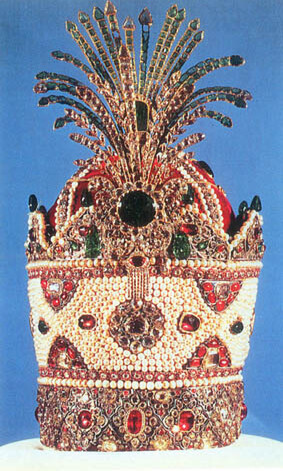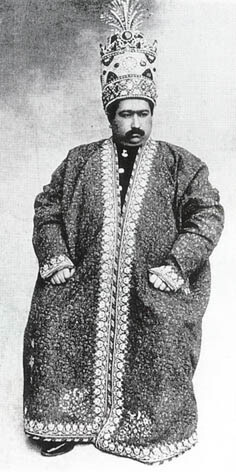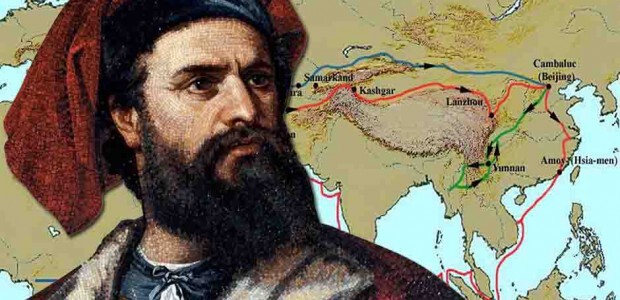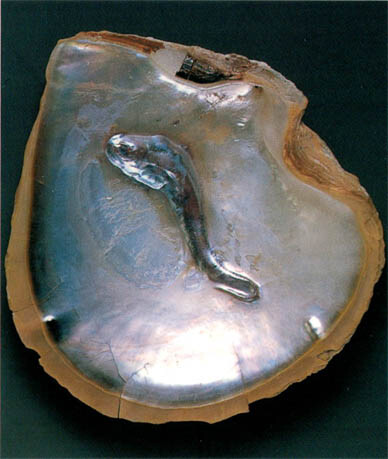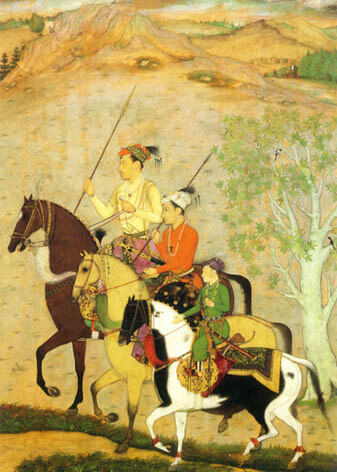A Great Topic
When the authors of the book, from which I draw reference, decided to write about Pearls, they were amazed at the scope of the topic.
Their book is impressive in size and they note that they have only covered a mere 'sampling of the data' out there.
So let us head back to my meagre sampling of this illuminating subject!
Their book is impressive in size and they note that they have only covered a mere 'sampling of the data' out there.
So let us head back to my meagre sampling of this illuminating subject!
Power
We left off with our extra-ordinarily wealthy Persians and their extravagant pearly displays.
These displays were designed to impress upon the people of the land and foreigners alike, the power and might of the rulers.
These displays were designed to impress upon the people of the land and foreigners alike, the power and might of the rulers.
India & Ceylon
Southern India & Ceylon – now Sri Lanka, were two countries lucky enough to have pearl-bearing molluscs in the sea (The Gulf of Mannar) between them.
Records from the 6th century B.C note that pearls were used as gifts between Indian kings. Writings from 300 B.C note that Ceylon's ambassador to India brought gifts of pearls to Indian rulers.
India, like Persia, used pearls as a means to express wealth and power.
Pearls from the Gulf of Mannar were considered to be the most beautiful in the world. The gems were, 'typically valued at three times their weight in gold!' Their value caused frequent power struggles between South Indian & Ceylonese rulers.
Records from the 6th century B.C note that pearls were used as gifts between Indian kings. Writings from 300 B.C note that Ceylon's ambassador to India brought gifts of pearls to Indian rulers.
India, like Persia, used pearls as a means to express wealth and power.
Pearls from the Gulf of Mannar were considered to be the most beautiful in the world. The gems were, 'typically valued at three times their weight in gold!' Their value caused frequent power struggles between South Indian & Ceylonese rulers.
Australian South Sea Pearls
Today, I believe the most beautiful pearls are the Australian South Seas. To prove this point, I will digress for a bit and share a story with you.
A client of mine was recently on holiday in Pretoria, South Africa. Whilst wearing a pearl pendant I had made her, she wandered in to a jewellery shop.
The gentleman behind the counter immediately commented on the magnificence of her pearl and stated, without question, that it was an Australian South Sea!
A client of mine was recently on holiday in Pretoria, South Africa. Whilst wearing a pearl pendant I had made her, she wandered in to a jewellery shop.
The gentleman behind the counter immediately commented on the magnificence of her pearl and stated, without question, that it was an Australian South Sea!
Indian Rulers
In the 10th century A.D, Rajaraja the Great, centralised and took ownership of the Gulf of Mannar's pearl fisheries.
Rajaraja was the first ruler of the Chola dynasty – a dynasty that lasted until the 13th century.
During this time, sales of the lustrous pearls saw them light up the trans-Asian trade route as they travelled across two continents into foreign lands. Arrival in foreign lands sparked interest in their origin.
Rajaraja was the first ruler of the Chola dynasty – a dynasty that lasted until the 13th century.
During this time, sales of the lustrous pearls saw them light up the trans-Asian trade route as they travelled across two continents into foreign lands. Arrival in foreign lands sparked interest in their origin.
Travellers
One such interested foreigner was Marco Polo.
Marco Polo passed through India on his travels to China, taking notes along the way.
He noted a king wearing pearl jewellery "worth more than a city's ransom." Marco further noted that the King forbade the exportation of large pearls from his fisheries under his control, for he "desires to reserve all such to himself, and so the quantity he has is almost incredible!"
He noted a king wearing pearl jewellery "worth more than a city's ransom." Marco further noted that the King forbade the exportation of large pearls from his fisheries under his control, for he "desires to reserve all such to himself, and so the quantity he has is almost incredible!"
There were other travellers recording sights of the time, stating "Pearls are what they most esteem and their value surpasses that of all other jewels; they hoard them up in their treasures with their most precious things."
Pearls fit for a King!
Can you imagine how beautiful those large pearls the king kept for himself must have been?!
But how do they get to be so large?
Molluscs are filter feeders and sometimes, small worms or fish wiggle their way into the mollusc's realm. In order to protect its soft body, it coats the intruder with layers upon layers of nacre.
The fish pictured below was too large to be a free-formed pearl, so the oyster coated it with nacre on to its shell instead.
But how do they get to be so large?
Molluscs are filter feeders and sometimes, small worms or fish wiggle their way into the mollusc's realm. In order to protect its soft body, it coats the intruder with layers upon layers of nacre.
The fish pictured below was too large to be a free-formed pearl, so the oyster coated it with nacre on to its shell instead.
Molluscs have been lying undisturbed and undiscovered on the ocean's sandy floors for millions of years. Before humans discovered them, they could live up to 50yrs or more.
Imagine then, if a foreign body entered into a mollusc at a young age, just how big a pearl could be!
Imagine then, if a foreign body entered into a mollusc at a young age, just how big a pearl could be!
India in 'The Pearl Age'
Before we say goodbye to our Indian rulers and their exquisite collections of pearls, we will jump ahead to 16 th Century India.
This era, 1500's to 1700's, is known as 'The Pearl Age of Europe' or 'The Pearl Craze.'
I will cover the Europeans of this era in another blog, but I will briefly discuss events in India during this time.
In my last blog I mentioned that as Persia's wealth grew, outsiders wanted to have a share of it. The same happened for India, and it started with the Moors (who possibly originated from Persia)
The Moors invaded India in the 16th century and established the Mogul Empire.
I will cover the Europeans of this era in another blog, but I will briefly discuss events in India during this time.
In my last blog I mentioned that as Persia's wealth grew, outsiders wanted to have a share of it. The same happened for India, and it started with the Moors (who possibly originated from Persia)
The Moors invaded India in the 16th century and established the Mogul Empire.
When they invaded, they took control of the pearl fisheries.
It is often the working class that suffer when there has been an invasion and in this particular instance, it was the native pearl fishermen.
They were oppressed and suffered great loss of income.
Deciding to put an end to their suffering they rose up against the Moors with the help of the Portuguese seafarers, and retook the fisheries.
It is often the working class that suffer when there has been an invasion and in this particular instance, it was the native pearl fishermen.
They were oppressed and suffered great loss of income.
Deciding to put an end to their suffering they rose up against the Moors with the help of the Portuguese seafarers, and retook the fisheries.
From the Frying Pan into the Fire
Their joyous victory was, sadly, short-lived.
Their Portuguese friends were not content to do a good deed and move on. There was too much wealth to be left in the hands of mere fishermen, so they put themselves in control.
Perfect timing too, as it was the beginning of "The Pearl Age" of Europe – 1524 – 1658.
The Portuguese reaped an untold fortune from the pearl fisheries of India and Ceylon.
Word of this amazing wealth was too much for the Dutch, so they arrived and supplanted the Portuguese.
Next in line to take over were the British, but….. too late.
By now, it is the late 1800's and the magnificent natural pearls from the Gulf of Mannar have all but ceased to exist.
Their Portuguese friends were not content to do a good deed and move on. There was too much wealth to be left in the hands of mere fishermen, so they put themselves in control.
Perfect timing too, as it was the beginning of "The Pearl Age" of Europe – 1524 – 1658.
The Portuguese reaped an untold fortune from the pearl fisheries of India and Ceylon.
Word of this amazing wealth was too much for the Dutch, so they arrived and supplanted the Portuguese.
Next in line to take over were the British, but….. too late.
By now, it is the late 1800's and the magnificent natural pearls from the Gulf of Mannar have all but ceased to exist.
Next time....
For my next blog, we will step back in time and visit the Romans.
They were described as having,
"a voracious appetite for pearls!"
REF:
Pearls - Ornament and Obsession
Authors,
Kristin Joyce and Shellei Addison
They were described as having,
"a voracious appetite for pearls!"
REF:
Pearls - Ornament and Obsession
Authors,
Kristin Joyce and Shellei Addison
